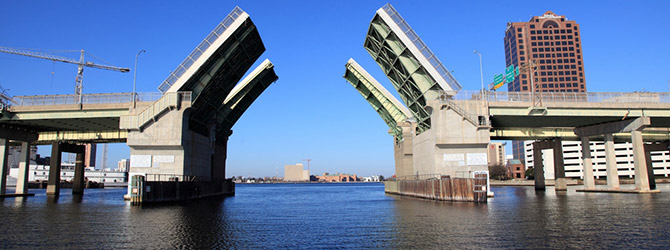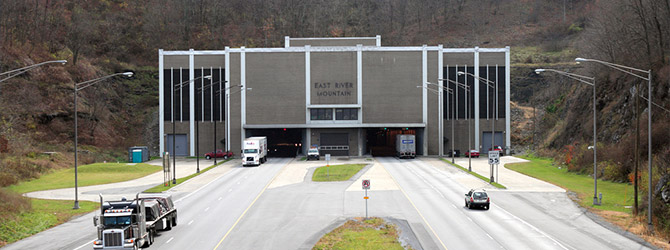The Virginia Department of Transportation (VDOT) is responsible for building, maintaining, and operating the state's roads, bridges, and tunnels. In fact, Virginia has the third-largest state-maintained highway system in the country. We enjoy a rich history of partnering with VDOT to design, develop, and implement innovative transportation solutions.
The 17-member Commonwealth Transportation Board (CTB) is the body that establishes the administrative policies for Virginia's transportation system. In March 2011, the CTB adopted the National Fire Protection Association (NFPA) 502: Standard for Road Tunnels, Bridges, and Other Limited Access Highways as the fire and life safety standard for the design, construction, and operation–including emergency response operations–of its roadway tunnel structures and bridges.
The Challenge
Compliance with the NFPA 502 Standard presented VDOT with both the opportunity and the need to make significant program-level investments in its critical tunnel and bridge infrastructure, specifically in operations, maintenance, and emergency response planning, training, and exercises. In 2014, VDOT asked us to help manage the multitude of risks presented by Virginia's roadway tunnels and bridges. Several significant domestic and international transportation incidents such as the 2015 D.C. Metrorail fire and multiple fire incidents in Europe's Channel Tunnel, encouraged VDOT's Operation Division to enhance its emergency response and recovery capabilities to help achieve compliance with NFPA 502.
 Photo by Tom Saunders, VDOT
Photo by Tom Saunders, VDOT
Building the Program
We were asked to design, develop, conduct, and evaluate emergency response exercises consistent with the Homeland Security Exercise and Evaluation Program (HSEEP). Exercises are a key component of national preparedness. They provide officials and stakeholders with the opportunity to shape planning, assess and validate capabilities, and address areas for improvement. The first tunnel exercise was a discussion-based tabletop exercise conducted in early 2015 for the Big Walker and East River Mountain Tunnels in Southwest Virginia. Since then, VDOT has sponsored, and we have supported, more than 15 discussion- and operation-based HSEEP exercises; hosted more than 50 exercise meetings and related events; and reached more than 600 members of the local, state, and federal emergency response communities.
 Photo by Tom Saunders, VDOT
Photo by Tom Saunders, VDOT
Using Innovative Approaches
We have partnered with VDOT to develop innovative approaches to delivering successful critical transportation infrastructure exercises. We focused on what was most important to VDOT. Priorities included supporting VDOT with our professional technical and subject matter experts; designing and developing the required HSEEP documentation for each exercise; and delivering meeting facilitation, exercise control and evaluation, and coordination of exercise events. At the same time, VDOT expressed a desire to build upon its own organic preparedness capabilities. We help by providing HSEEP training to key members of VDOT, as well as to emergency response and recovery stakeholders in the local jurisdictions where exercises are held. Once trained, VDOT staff and stakeholders are integrated into exercise control and evaluation positions. By accomplishing this, we helped VDOT achieve significant cost savings on its contractor footprint, while at the same time building internal preparedness capabilities of other agencies and jurisdictions throughout the state.
Looking to the Future
For 2017, VDOT has asked us to help update its suite of tunnel emergency response plans. We are also fully developing new emergency response plans for Virginia's movable bridges. We continue to explore new and innovative ways to help VDOT enhance its emergency response and recovery capabilities by conducting hybrid exercise and planning activities to further achieve NFPA 502 compliance. For 2018, we are looking forward to helping VDOT implement a fully integrated planning, training, and exercise program for its tunnel and bridge infrastructure.